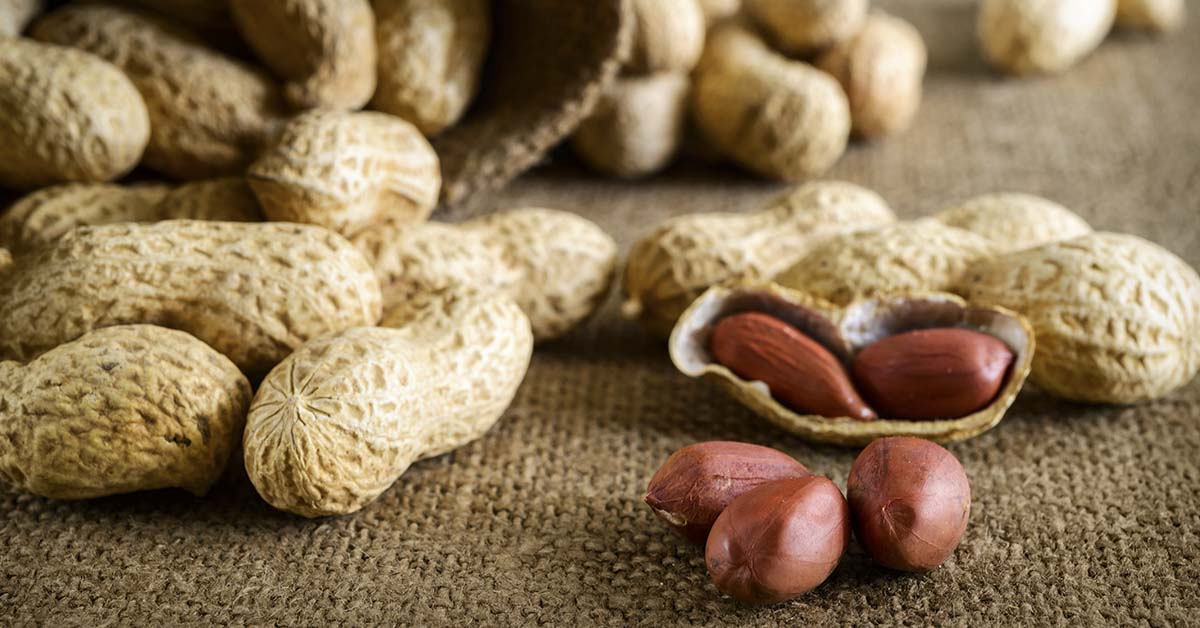Most people strive for a healthy life and, in doing so, eat healthy and nutritious foods. However, common food allergies can complicate mealtime. One of the most common allergies is peanuts. A good source of protein and other nutrients that most people are shocked to learn isn’t actually a nut.
The common misconception likely stems from its high-fat content and other similarities shared between peanuts and other things that people call colloquially call nuts. However, peanuts are not nuts and are technically legumes.
Peanuts aren’t nuts, and neither are a lot of other things.
Before we carry on, let’s get some definitions straight when it comes to nuts. Nuts are actually types of fruits with woody, inedible shells. Examples of true nuts include acorns or hazelnuts. In contrast, almonds and pistachios are also fruits, but they aren’t nuts; they’re actually drupes. Drupes have a fleshy exterior that surrounds a hardshell containing a seed. Examples of drupes include almonds, pistachios, peaches, and plums. In some cases, only the fleshy fruit is consumed, like peaches, cherries, olives, and plums. However, in other cases, only the seed is consumed, like pistachios or almonds. And finally, as mentioned previously, peanuts are actually legumes and for culinary purposes, technically classified as a vegetable.
Other Members of the Peanut Family
What’s even more surprising is how legumes are classified. It turns out that all legumes including, soybeans, lentils, peas, and others, are actually grown from the same family of trees, called the Fabaceae Family. Interestingly, some countries even use raw legume materials to make certain types of plastic.
Another key difference is cost. Most true nuts, and drupes, are more costly than peanuts. One major factor of this is water. Peanuts require less water, meaning they’re cheaper to grow. Fortunately, this means they’re also better for the environment.
The similarities shared between the popular legume, and other true nuts include nutritional value. Peanuts are high in protein, and when eaten raw, or without added sugar and sodium, they have a high concentration of healthy polyunsaturated fats. Additionally, they’re a good source of fiber as well as biotin, folate, niacin, and magnesium. Similarly, true nuts like hazelnuts and chestnuts are also high in protein and other essential vitamins and minerals.
Symptoms of Peanut Allergies
Sadly, because allergies to peanuts is one of the most common food allergies, some people are limited from many dishes. Furthermore, they’ll have to take extra precautions when eating out, or grocery shopping in aisles with processed foods, like chips and cereal. In some cases, a reaction to peanuts can cause life threatening anaphylaxis. However, for many symptoms may include:
- Rash or Hives
- Shortness of Breath
- Swelling of the eyes and throat
- Digestive Issues
Meal Ideas with Peanuts
For families that don’t consist of anyone with peanut allergies in their homes, this legume can be incredibly versatile in the kitchen. Peanuts can be added to salad for depth, texture, and added flavor. Peanuts make a great on the go snack with lots of protein and fiber to help keep you fuller, longer. They’re great for spreading on toast or adding to a bowl of oatmeal for breakfast. However, if you’re looking for fun ideas for hosting a dinner party or luncheon, check out these creative and delicious ideas. Another example of the peanut’s versatility includes its influences on Thai cuisine.
Other Misunderstood Nuts
With peanuts’ actual classification surprising people, it’s no wonder that other nuts like almonds and cashews are also a bit confusing. Luckily, their classification is just as easy to break down. Almonds and cashews are both drupes, and examples of fruits that are consumed. Other “nuts” that are actually drupes include, Brazil nuts, pecans, macadamia nuts, and pine nuts. Therefore, the only true nuts, those with hard wood-like shells, are hazelnuts, chestnuts, and acorns. Furthermore, all drupes and true nuts, are considered fruits.
Similar to peanuts, cashews and almonds have high amounts of unsaturated fats, when consumed raw or without added sugars and sodium. Cashews are also high in Vitamin K. Meanwhile, almonds are incredibly high in Magnesium.
Regardless of their classification, peanuts and other legumes, as well as all tree nuts and fruits provide a variety of nutrients for our bodies in order to function healthily and happily. Furthermore, it’s always recommended to “eat a rainbow” throughout the day, fueling the body with a well-rounded range of essential vitamins and minerals.
Keep Reading: 5 Reasons Why Guava Should Be a Part of Your Day
Sources
- “Peanuts 101: Nutrition Facts and health benefits.” Healthline. Atli Arnarson BSc, PhD. March 28, 2023
- “Cashews and almonds aren’t technically nuts. So, what are they?” Mcgill. Caitlin Bard, Oss Intern. 2020
- “Why aren’t peanuts, pecans and almonds real nuts?” Live Science. Donavyn Coffey. December 26, 2020.
- “Legume of the month: Peanuts.” Harvard Health. June 1, 2019
- “Are nuts fruits?” Healthline. Ryan Raman, MS, RD. November 20, 2019.

